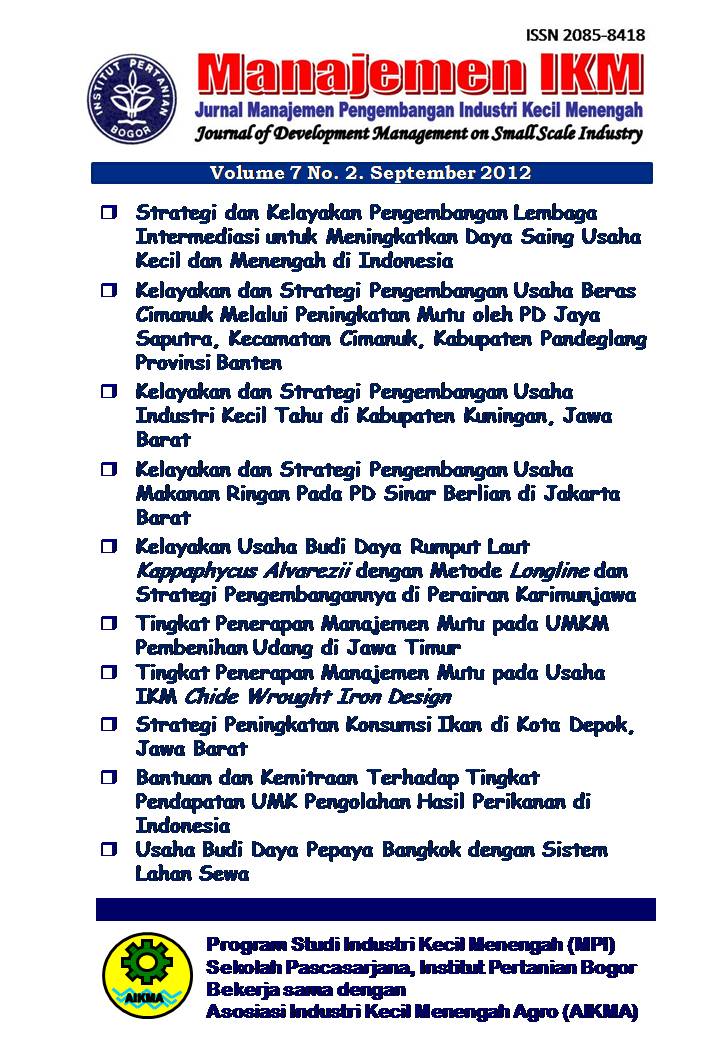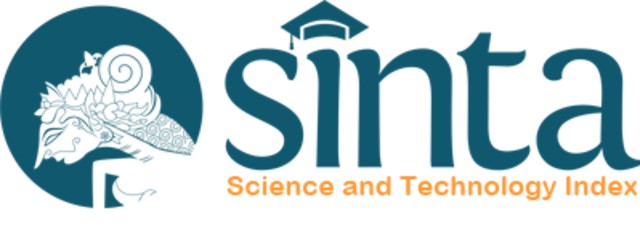Strategi dan Kelayakan Pengembangan Lembaga Intermediasi untuk Meningkatkan Daya Saing Usaha Kecil dan Menengah di Indonesia
Keywords:
innovation, intermediary institution, services, small and medium enterprises, technology
Abstract
Due to the rapid growth of the global business, the establishment of Small and Medium Enterprises (SMEs) which has highly competitiveness is necessary to be conducted. One of several important factors that influence the building of the SMEs mentioned above is the ability of innovation and technological capabilities, where the SMEs due to lack of access to technology. One of the reason why the SMEs do not have the updated technology is because they do not have the access to the Research and Development (R&D) Institutions which create the updated and the appropriate technology. In this instance, the SMEs is solely as the users of technology. In this concept of innovation systems, it is attempted to build an institution which has its role and function, as an intermediate actor between the R & D institutions and the SMEs. This research was chosen one LI, that is the Technology Incubator Center (BIT) at Puspitek Serpong, which aims (1) to identify the characteristic and conditions of BIT, (2) to identify the factors that influence the successes of BIT as LI, (3) to formulate a strategy and feasibility of developing BIT. Matrix IFE, EFE, IE, SWOT, and QSPM were used for processing and data analyses. Factors that influenced the successes of BIT performance were the number of human resources, fund availability and financial services, infrastructure, networking, appropriate services and serious/strong commitment for tutoring and helping tenants (SMEs). Based on analysis of functional feasibility, BIT has fulfill the requirement as a good organization, as an intermediary institution and as a business incubator. Based on the determination of QSPM matrix, there were three main strategies to be implemented to BIT are: (1) To increase the utilization and the use of existing human resources to enlarge the number and to enhance the competitiveness of assisted SMEs; (2) To maintain and to enhance the quality and the quantity of technology services for SMEs assisted, via utilization technology produced by R & D institutions; (3) To maintain and to enhance the quality and the quantity of market access services to acquire bigger share of market for assisted SMEs's productsDownloads
Download data is not yet available.
Published
2012-11-22
How to Cite
AngkasaW. I., HubeisM., & PandjaitanN. K. (2012). Strategi dan Kelayakan Pengembangan Lembaga Intermediasi untuk Meningkatkan Daya Saing Usaha Kecil dan Menengah di Indonesia. MANAJEMEN IKM: Jurnal Manajemen Pengembangan Industri Kecil Menengah, 7(2), 95-101. https://doi.org/10.29244/mikm.7.2.95-101
Section
Vol. 7 No. 2












